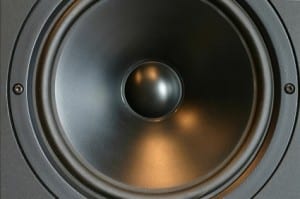Home Recording Academy: The Best Studio Monitors
Building a home studio – particularly building one on a budget, as most of us do – is often all about compromise. It's about finding the equipment that will deliver the sound you desire while still staying within your budget. Often this means skimping on certain equipment, and while that can be fine in many areas, one area where you shouldn't cut corners to save money is on your studio monitors.

Now, this isn't to say that you need to go spend tens of thousands of dollars on monitors to achieve a great mix, but it does mean that you can't just decide that your current external computer speakers or headphones will be “good enough” - because they won't be.
- Note: Headphones can have a place in mixing, and we'll discuss that role in another blog – but suffice it to say they do not replace studio monitors.
Consumer speakers are designed to make music sound better. This means they come with their own EQ settings, and is also one of the reasons your mix sounds different on every stereo you test it on. The goal of studio monitors, also known as reference monitors, is to have them produce a flat frequency response so nothing is getting boosted or cut that shouldn't be – that's your job as a mixer, not the job of your speakers.
The best studio monitors have a flat frequency response, and they equally represent all the frequencies the human ear can hear. This typically means that smaller studio monitors may not have enough bass response for you to get a true representation of the low end of your mix. Like all music equipment, prices on the equipment will vary, but you probably will not want to spend less than $300 on a good pair of monitors. Finding a pro audio expert that knows monitors and is willing to show you examples of all the monitors available is a great way to find the monitors that work best for you.
To illustrate two opposite ends of the spectrum when it comes to studio monitor needs, I offer two examples:
- The first is my own. When I was putting together my first home studio years ago, I bought a pair of monitors cheap from a buddy of mine that was upgrading to a better set of monitors (that should have been my first clue). At first, I cranked up some pre-recorded music through the speakers that sounded great. I thought I had found a great deal – until I went to mix my first song with the monitors.
The mix sounded great on the monitors, but when I played the song on my car stereo, the bass was so loud it nearly shattered the windows (keep in mind this was an Americana song, so the windows weren't supposed to be shaking). The monitors didn't have the low end response I needed for an accurate sound.
- The second is on the other end of the studio spectrum, at our own CD mastering studio, where we put together a system of some of the best monitors available to produce some of the best mastered songs available. We use a pair of Tyler Acoustic D1 mains powered by a Bryston 4B SST amplifier, as well as a pair of custom SS-M7 monitors and mono-block tube amps (the latter is for home stereo system referencing). You can learn more about our equipment on our homepage, and you can also visit our online mastering page to find out how to have your own home studio mixes mastered and made ready for distribution.




